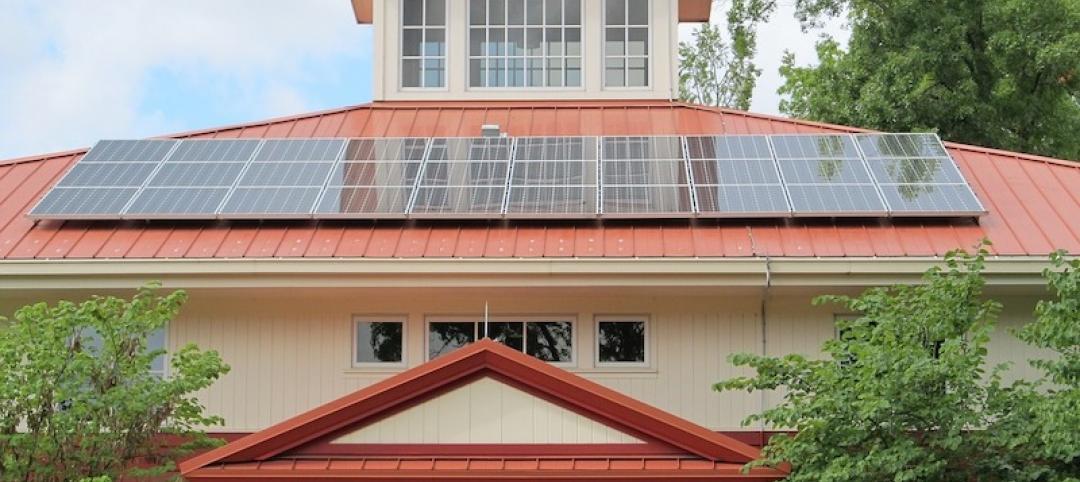Starting in June, California’s latest version of its Title 24 building code kicks in, requiring several systems come with demand response capability. Every new or retrofit thermostat, HVAC system, networked lighting controller, and building automation system in the state will have to be ready for two-way, automated utility-to-customer energy management. Non-residential building lighting systems will be required to have daylight-matching adjustment, dimming and demand response capabilities.
These devices and systems will be required to be “capable of receiving and automatically responding to at least one standards-based messaging protocol” to receive signals from utilities. There are a few standards that meet the requirement— OpenADR, SEP 2.0, and HomePlug.
OpenADR was developed by the California Energy Commission and Berkeley Labs. It offers tools to allow buildings and utilities to communicate about energy availability, price, and how buildings can execute and confirm actions to reduce power use.
These standards were enacted after the California Energy Commission identified flaws in the state’s approach to demand response in a 2013 report, including a failure to reach modest goals set in 2007 to reduce peak demand by 5%. The solution may come from a market-based program to encourage users to reduce demand during peak energy use periods. The new demand-response standards pave the way for this option.
Related Stories
| Jul 1, 2014
$1 billion master planned development in California clears key hurdle
Plans for a new section of the proposed $1 billion La Entrada master-planned community in Coachella, Calif., moved ahead after the developer and city council agreed that the plan would include 500 affordable housing units.
| Jul 1, 2014
Dept. of Labor reaches settlement for $5 million in back wages for workers on federally assisted project
The U.S. Department of Labor and MDG Design & Construction LLC have reached a settlement over wage violations at the federally-assisted 26-story Grand Street Guild rehab project in New York City’s Lower East Side.
| Jul 1, 2014
GSA, Homeland Security research leads to performance-based design guide
The National Performance Based Design Guide, based on research and development supported by the Science & Technology Directorate of the Department of Homeland Security and the Public Buildings Service of the General Services Administration, is now available.
| Jul 1, 2014
FEMA grant helps fund school theater that will double as tornado safe room
Scott City School District in Missouri recently broke ground on an 8,990-sf performing arts theater that will also function as a tornado safe room.
| Jun 30, 2014
Research finds continued growth of design-build throughout United States
New research findings indicate that for the first time more than half of projects above $10 million are being completed through design-build project delivery.
| Jun 26, 2014
Canadian groups combine forces to support EPD program for LEED v4
The Canadian Standards Association (CSA) Group and the Canada Green Building Council (CaGBC) will collaborate to support LEED v4 and CSA Group’s Environmental Product Declaration (EPD) program.
| Jun 26, 2014
Ohio is first state to roll back renewable energy standards
Ohio became the nation’s first state to roll back renewable energy standards after the state House of Representatives passed Senate Bill 310 and Gov. John Kasich recently signed the measure.
| Jun 26, 2014
Walkable areas lead to higher rents for developers
New research from a George Washington University research group and LOCUS, a coalition of real estate investors that's part of Smart Growth America,says that offices in “Walkable Urban Places (WalkUPs)” bring developers 74% more rent per square foot.
| Jun 18, 2014
ASHRAE publishes guideline on specifying Building Automation Systems
Performance monitoring guidance is a key feature of the document. It provides designers of BAS systems with recommendations for good practice, project considerations, and detailed discussion of design options.
| Jun 18, 2014
Battle over low-cost, Chinese-made solar equipment could stunt solar power growth
The U.S. Department of Commerce tentatively agreed to assess tariffs of up to 35% on solar equipment, a move that could slow the rapid growth of the domestic solar power industry.














